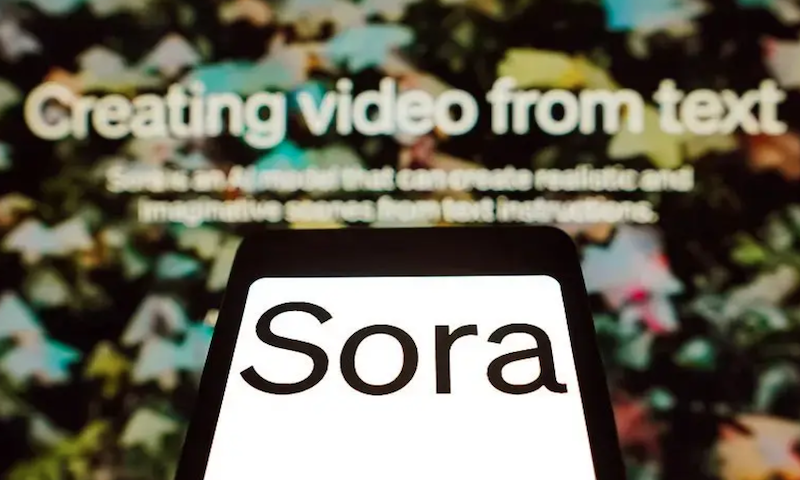In the past decade, fintech has undergone earth shattering changes, from a niche trend that only a few people have paid attention to, to a powerful force capable of changing the global financial landscape. In the past five years, the fintech field has not only witnessed a sharp increase in the number of enterprises, especially in the Americas, but also a significant growth in global fintech users. Especially in the field of digital payments, according to Statista data, it is expected that the global user base will exceed 3.5 billion by 2024. All of this marks that fintech has become an irreversible global trend.
According to The New York Times, the valuation of OpenAI, a leading artificial intelligence (AI) company headquartered in San Francisco, has skyrocketed to over $80 billion. This significant growth signifies that its value has tripled in less than 10 months, demonstrating an increasing interest and investment in AI technology. After the launch of ChatGPT, it also launched the globally sensational Generative Artificial Intelligence Sora.
Sora's debut: a huge leap in the field of artificial intelligence
Sora is an innovative generative artificial intelligence (AI) developed by OpenAI. The name Sora comes from the Japanese word "sky", meaning "sky", to demonstrate its infinite creative potential. It is specifically used to generate video content from text prompts. It marks a significant advancement in the field of AI, especially in video generation technology. Sora utilizes diffusion model technology to transform simple text descriptions into dynamic and realistic videos, providing unprecedented flexibility and creativity for content creation.
In order to achieve higher realism, Sora combines two different artificial intelligence methods. The first type is the diffusion model, similar to the one used in image generators such as DALL-E. This type of model gradually transforms randomized image pixels into coherent images through learning. The second type is transformer architecture, which is used for context analysis and concatenation of continuous data.
For example, a large language model uses a converter architecture to combine words into generally understandable sentences. During the video generation process, OpenAI decomposes video clips into visual "spatiotemporal patches", which can be processed by Sora's converter architecture. This technology can perform various functions, including generating videos from scratch, expanding the content of existing videos based on text prompts, or creating dynamic videos from static images. Sora can also create multiple shots in a single generated video, accurately maintaining consistency between characters and visual styles. Sora's ability means that it can find applications in multiple fields such as entertainment, education, and marketing, providing users with a simple way to transform their imagination into visual stories.
Exploring the Risks and Challenges of Sora's Scaling Development
With the large-scale application of artificial intelligence technologies like Sora, it has the potential to bring a series of risks and challenges to China. These not only include the limitations of technology itself, but also touch on multiple levels such as ethics, law, and social security.
The generation of harmful content
Sora has the ability to generate videos from text prompts, which allows it to create diverse visual content while also potentially generating harmful content involving violence, pornography, and illegal activities. Therefore, when using Sora, careful consideration should be given to the balance between content creation freedom and preventing harmful information, which may require the introduction of complex content filtering algorithms, user input guidelines, and effective content supervision mechanisms.
Online fraud and the spread of false information
Sora's highly authentic video generation ability, especially for those with weaker discernment abilities (such as the elderly), may become a powerful tool for online fraud and false message dissemination. It can synthesize highly deceptive videos based on real photos, or create news reports that are difficult to distinguish between true and false, thereby misleading the public, distorting their views on events, or spreading false information, increasing the challenge for society to distinguish the authenticity of information.
The issue of bias in training data
Like other artificial intelligence systems, Sora's performance and output quality heavily rely on its training data. If there is bias in the training data, it may lead to Sora exhibiting stereotypes or discriminatory tendencies towards certain characters, cultures, or social groups when generating video content, which can lead to social problems such as gender hostility and regional discrimination, exacerbating social division and inter group barriers.
Sora's Impact on the Financial Industry: Opportunities and Challenges
opportunity
Sora can introduce more dynamic forms of market analysis
Through vivid and engaging video formats, Sora can visualize market trends, economic data, and financial forecasts, greatly improving the accessibility and comprehensibility of data. Traditionally, financial analysts and investors rely on complex charts, reports, and numbers to analyze market conditions, which not only requires professional knowledge to interpret, but also often makes it difficult to quickly grasp key information. The emergence of Sora is expected to change this situation, as it can transform these abstract data into intuitive video content, allowing customers to understand and absorb information in a brand new way.
Using Sora for risk assessment and scenario simulation
Through Sora, financial practitioners can create detailed video simulations that showcase possible market movements and changes in specific economic scenarios, as well as how various risk factors affect market performance. This simulation not only includes deduction based on historical data, but also explores and predicts the impact of specific events on the entire market, such as significant interest rate adjustments, sudden economic crises, or other macroeconomic fluctuations that may cause market volatility. Sora's simulation function can also be used for strategic planning and emergency preparedness. By simulating different market conditions and economic events, financial institutions can prepare response strategies in advance, so that they can respond quickly and effectively when real situations occur. This kind of rehearsal ability is an indispensable part of risk management, which helps financial institutions improve their resilience and ability to cope with future uncertainties.
Using Sora as a training and educational tool
Through Sora's advanced video generation capabilities, complex market scenarios and investment strategies can be simulated with realistic actions and details, providing an intuitive and interactive learning environment for beginners in the financial industry. This method not only increases the fun of learning, but more importantly, greatly improves the effectiveness of education. In traditional financial education, beginners in the financial industry usually need to understand complex market principles and investment strategies by reading a large amount of textual materials and analyzing static charts. This learning method often appears dull and difficult for beginners to absorb. Sora's application has changed this situation by presenting abstract concepts and complex data in the form of dynamic videos, enabling learners to understand and remember financial knowledge in a more intuitive way.
challenge
The emergence of Sora may exacerbate monopolies in the financial industry
According to the prediction, the inference calculation cost of Sora's 1-minute video is 1000 times that of GPT-4's 1k token inference. Currently, the cost of GPT-4's 1k token inference is $0.06, so the estimated cost of SORA's 1-minute video is within $60. The technological advantages brought by the emergence of Sora may indeed exacerbate the monopolistic trend in the financial industry, especially when this technology is mainly mastered and applied by large financial institutions. These institutions, with more resources to invest in AI technology and data acquisition, may further consolidate their dominant position in the market, posing a challenge to small and medium-sized enterprises. This data advantage not only improves their operational efficiency and decision-making quality, but may also lead to market information asymmetry, further exacerbating competition inequality within the industry.
Sora is prone to triggering financial risks in specific scenarios
When false videos and information are processed, generated, and disseminated by Sora, it is more difficult and technically demanding to review content related to financial business scenarios. And it makes it more difficult for financial institutions to protect customer data and information security, especially with "deep forgery" technology, which is more likely to induce consumption and fraudulent behavior.
Sora may lead to an increase in unemployment rates in the financial industry
In the future, with the expansion of Sora and other applications in the financial field, people with high task repetition may face the risk of unemployment, which will put certain pressure on the employment market that relies on traditional financial service positions. Especially for practitioners with relatively limited professional skills, they may face career transformation challenges due to technological substitution.
epilogue
The emergence of Sora symbolizes a significant leap in the application of technology in the financial industry. It not only brings enormous potential for service improvement and operational optimization, but also triggers a series of socio-economic challenges. At this critical moment, how to properly balance the opportunities and challenges brought by technological development, ensure technological progress, and promote the healthy and sustainable development of the financial industry has become a key issue for future exploration.

 Deepen the application of scenarios and "chains" to connect a better future
Deepen the application of scenarios and "chains" to connect a better future